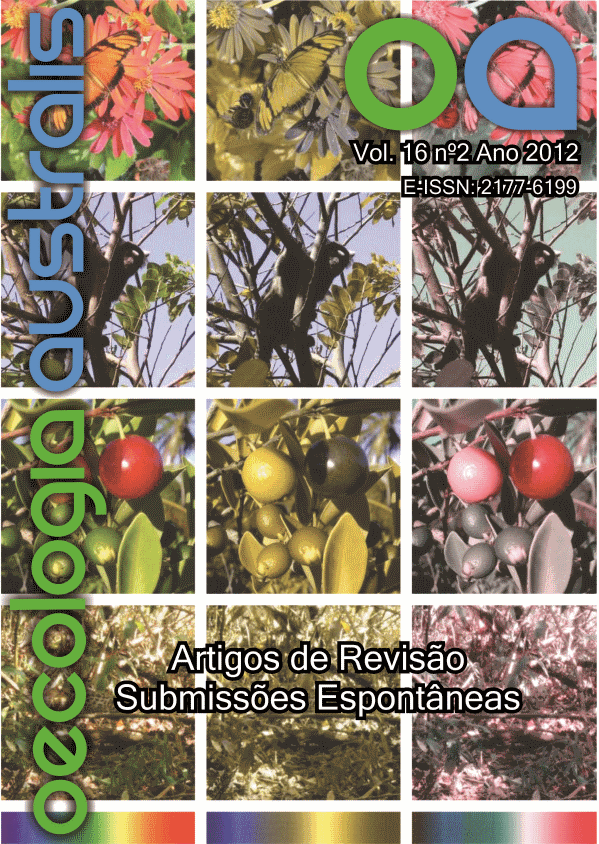FEEDING ECOLOGY OF MARINE MAMMALS: METHODS OF STUDY.
Keywords:
dieta, relações tróficas, conteúdo estomacal, isótopos estáveis, ácidos graxos.Abstract
Marine mammals feed on a wide variety of preys from distinct trophic levels, occupying different niches in short and in long food chains. Studies on feeding ecology of marine mammals are important to understand their trophic relationships, as well as assessing their trophic levels in a food web. These investigations contribute for a better comprehension of trophic structure, energy flow and function of the marine ecosystems. The goal of this review is to present the main methods used in studies of trophic ecology of marine mammals, including requirements to their applications, information that can be generated, as well as their limitations. The more conventional method, also the older one, is the analysis of stomach contents and feces. The importance of this tool is to provide the prey species identification and the estimative of its biomass. These features turn this into a useful tool to be also used as baseline for the other methods. Recently, two methods have been raised involving stable isotope and fatty acid. Both techniques are based on the fact that the isotopic and the fatty acid signature of the consumer reflect those of its preys in a predictable way, which allows investigations on marine mammal foraging in temporal and geographical scales. However, both methods present some limitations characterized by the fact that they do not allow identification of the consumed species, as well as by the necessity of previous knowledge on prey fatty acid signature or isotopic ratio. In fact, none of the three methods answer all questions regarding feeding ecology and trophic relationships of marine mammal. They do constitute complementary tools that should be simultaneously used wherever possible. Besides, micropollutants concentrations and patterns may provide additional information regarding diet and feeding habits of marine mammals.


